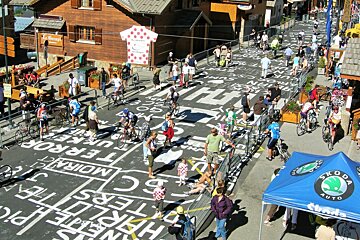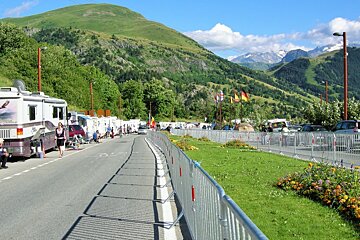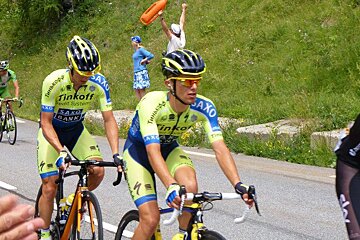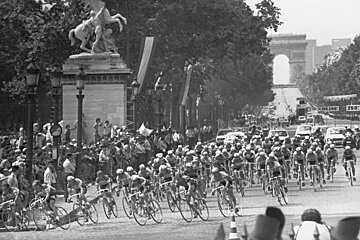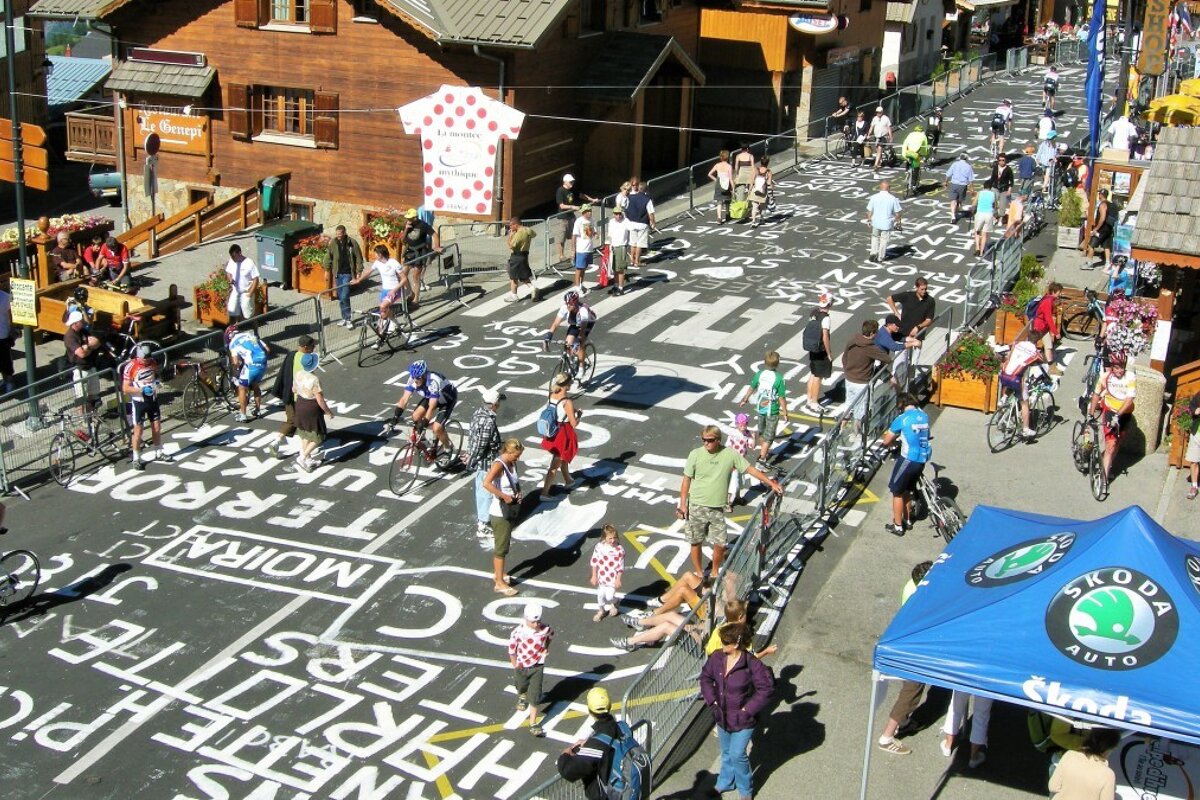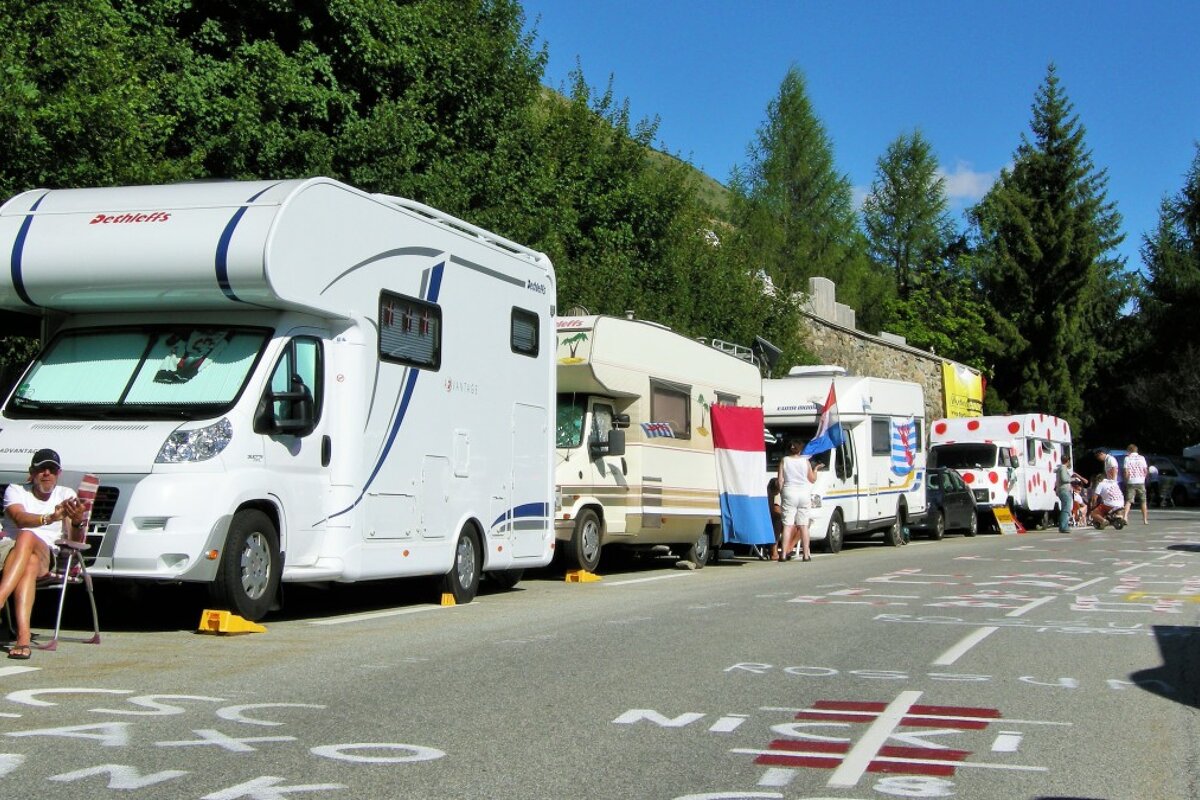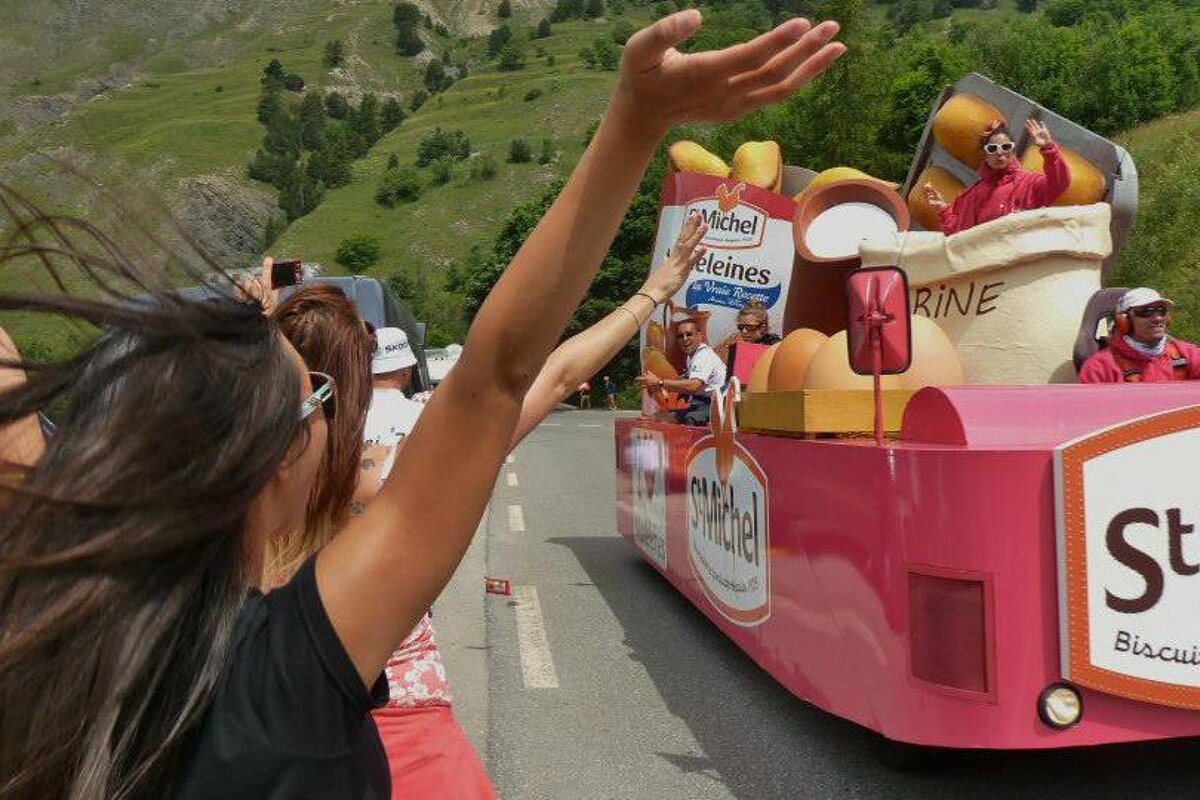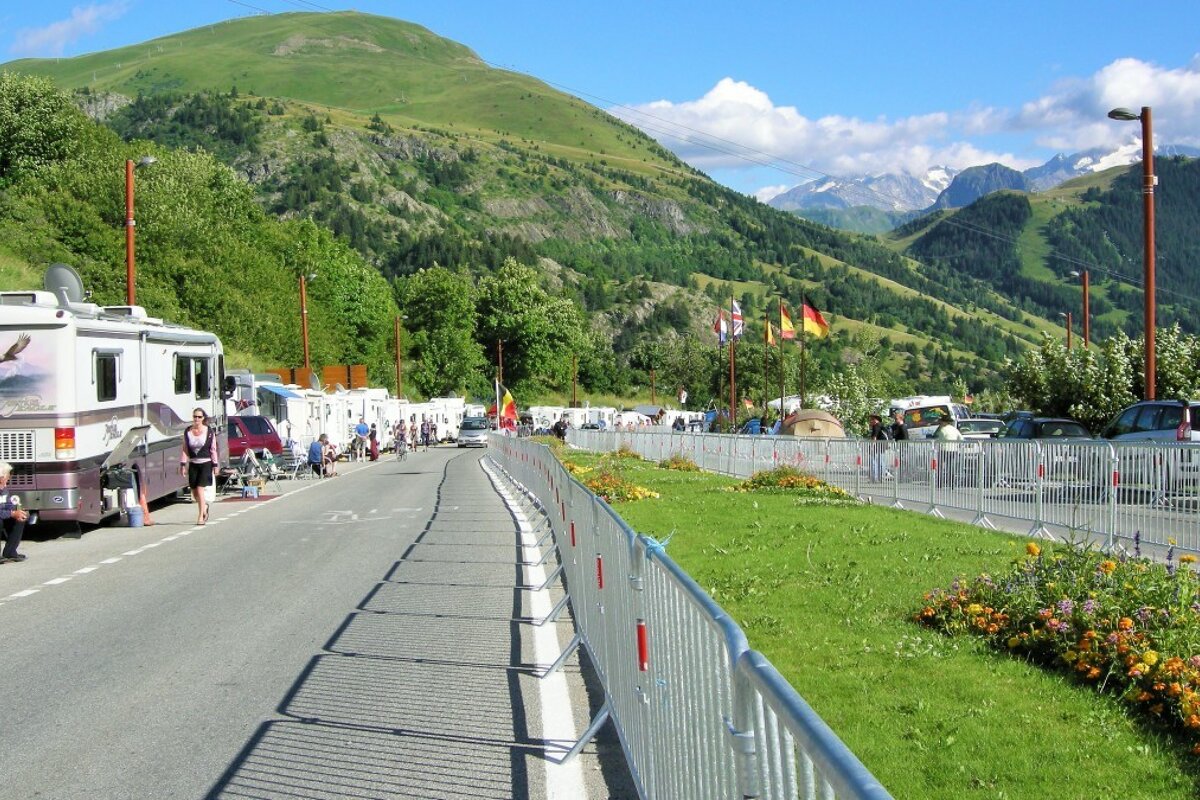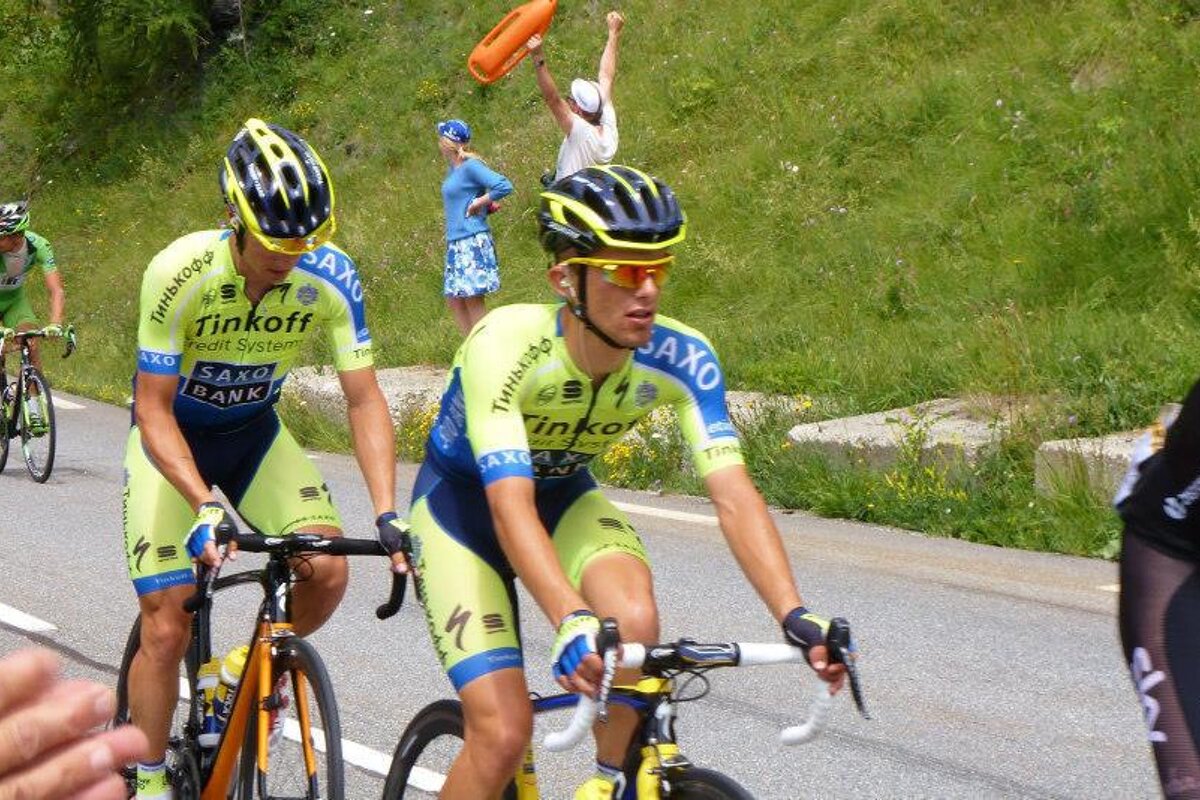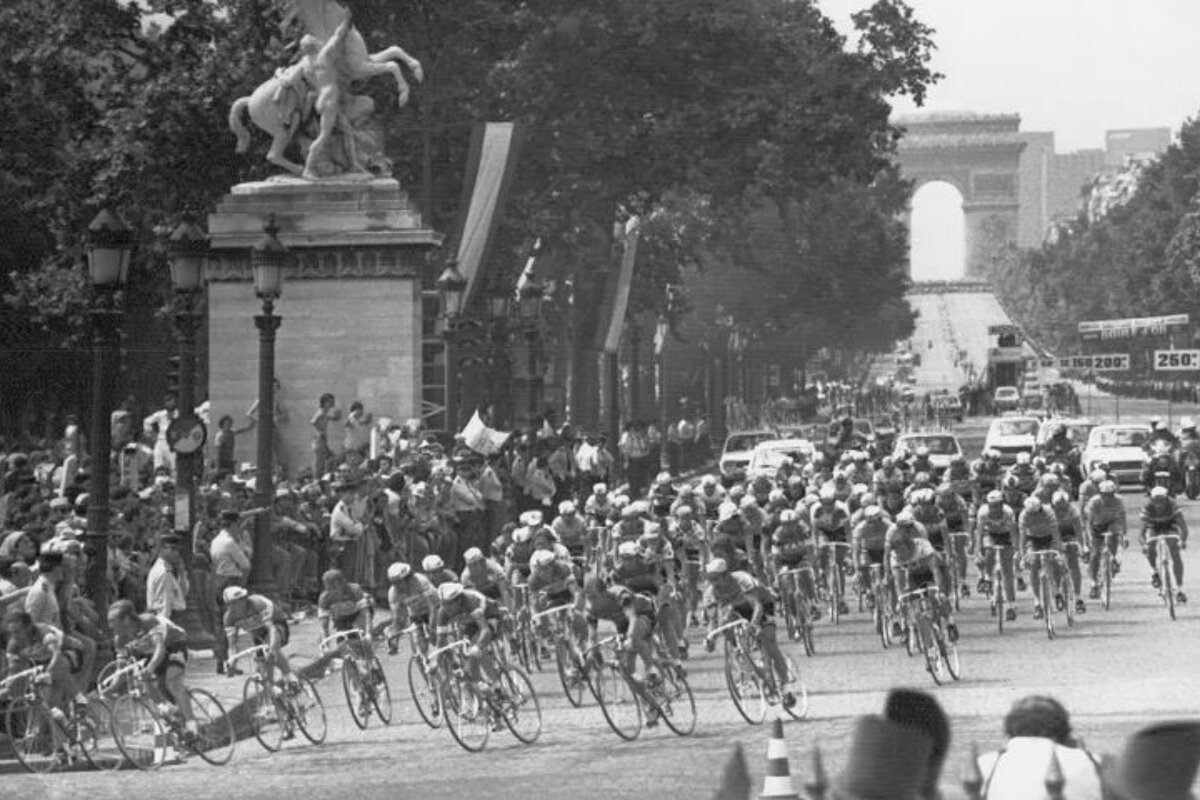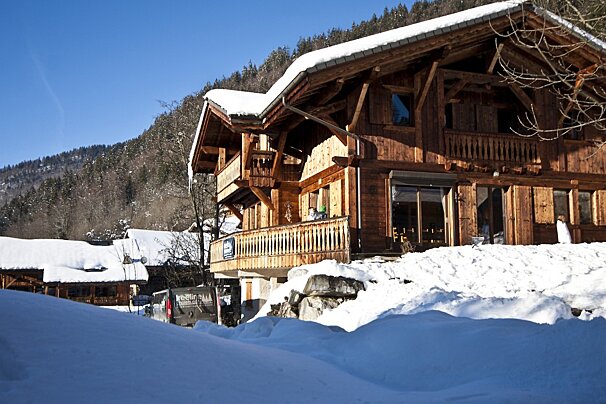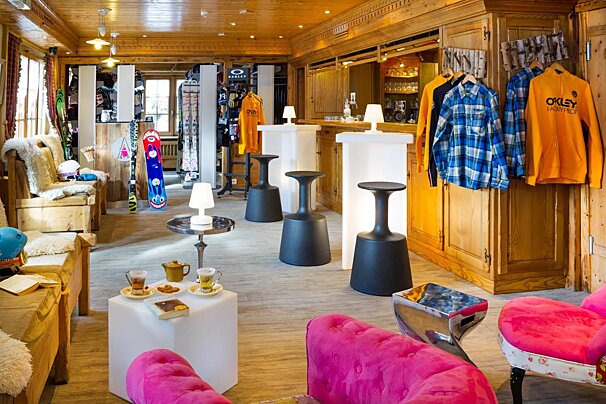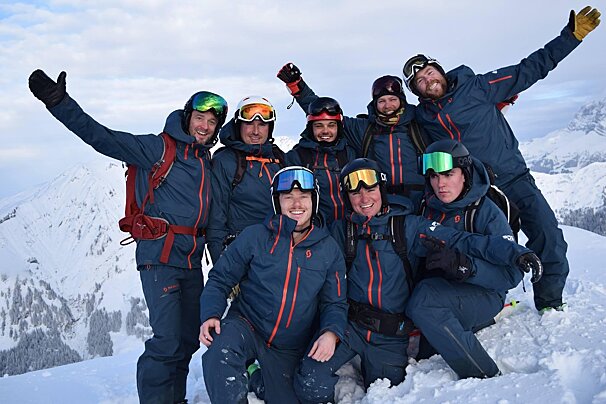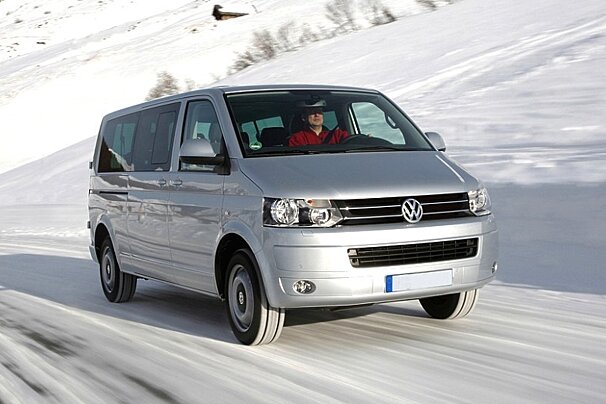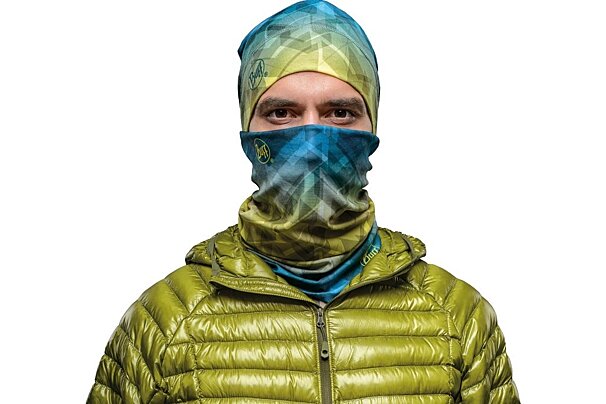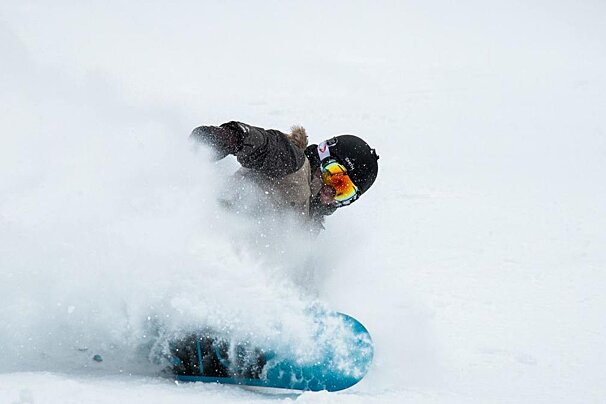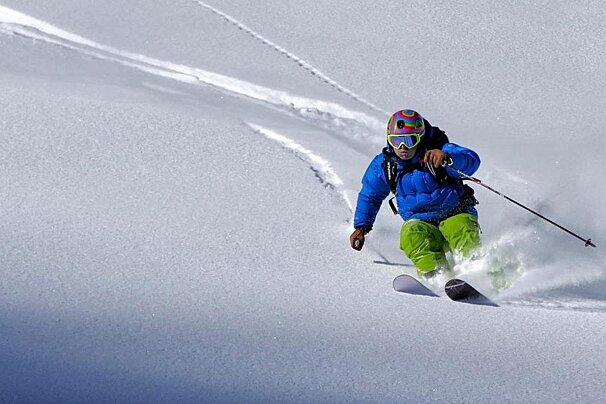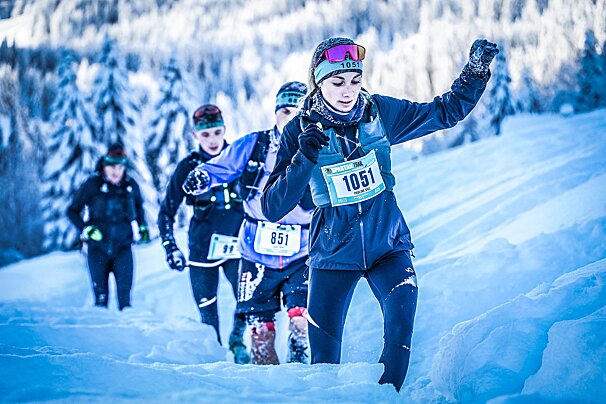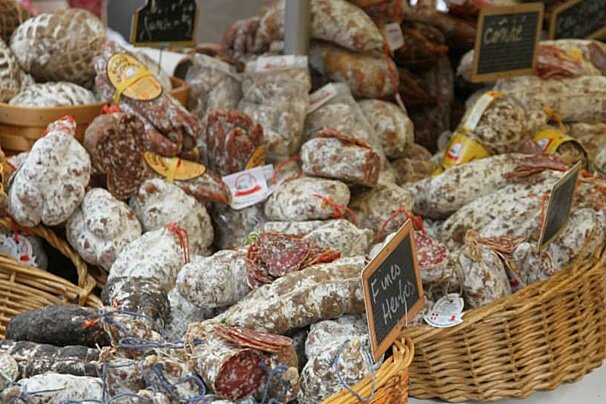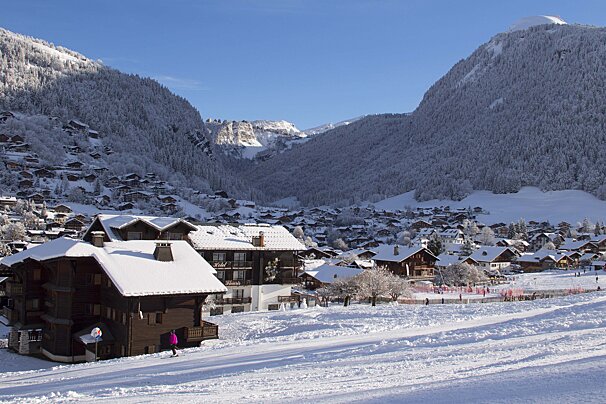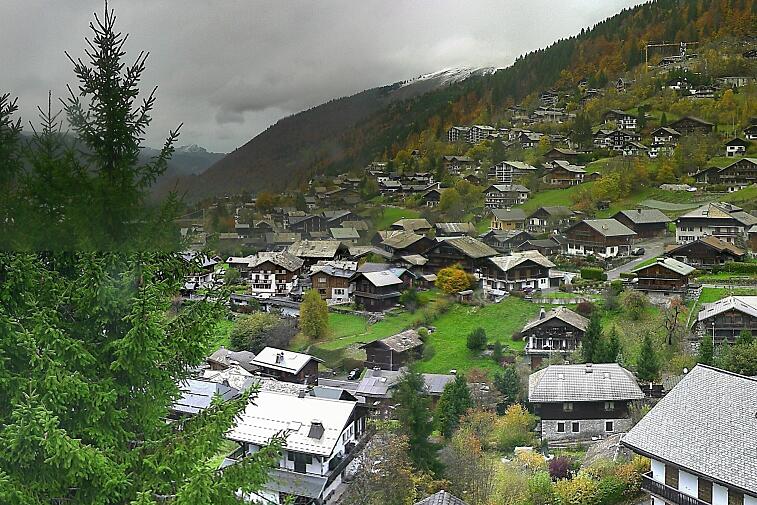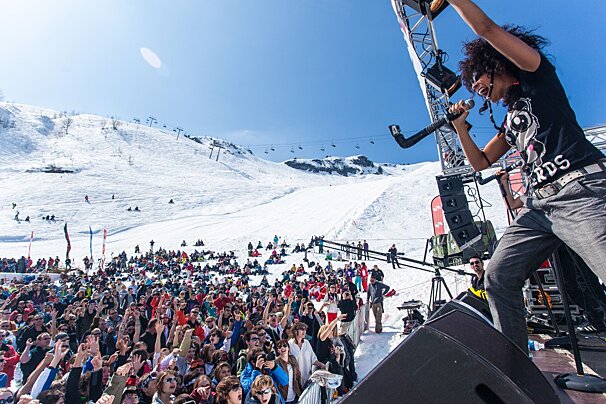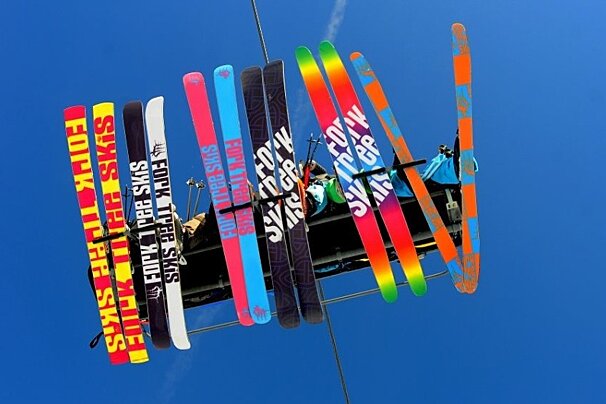
Le Tour de France in Morzine
Discover the tour and where to see it in Morzine
Le Tour de France is the most fervently supported and highly anticipated sporting event in France. Even those who don’t know their bicycle clips from their hand pumps recognise the yellow jersey of the Tour de France stage leader; but few would imagine that Le Tour was created because of the trial and conviction of French soldier Alfred Dreyfus.
The Tour de France
Takes place in the first three weeks of July with a mixture of flat stages, cobble stones, dramatic sprints and some of the biggest mountain stages that the Tour will ever see, ensures that the battle will continue right until the end.
See the full program of the Tour de France.
Jump to
Watch this
Where and when
Anyone making the pilgrimage to see Le Tour in action will enjoy the atmosphere as much as the race itself. It takes place each year across France during the first three weeks in July.
Crowds of people line the streets hours (sometimes even days!) in advance; tents, picnics and BBQs turn the wait for the cyclists into an impromptu street party. The eventual arrival of the publicity caravan heralds the start of the festivities.
The caravan
Almost as famous as the race itself, the caravan is a 20km long procession of 200 decorated sponsored vehicles that precedes the race. Added as a regular feature of the race in 1930 the caravan makes its way through the towns and villages that make up the race route, whipping up a carnival atmosphere and throwing free gifts to the cheering crowds along the way! Each vehicle tries to outdo the others to advertise their own brand, so the event is quite a spectacle.
History
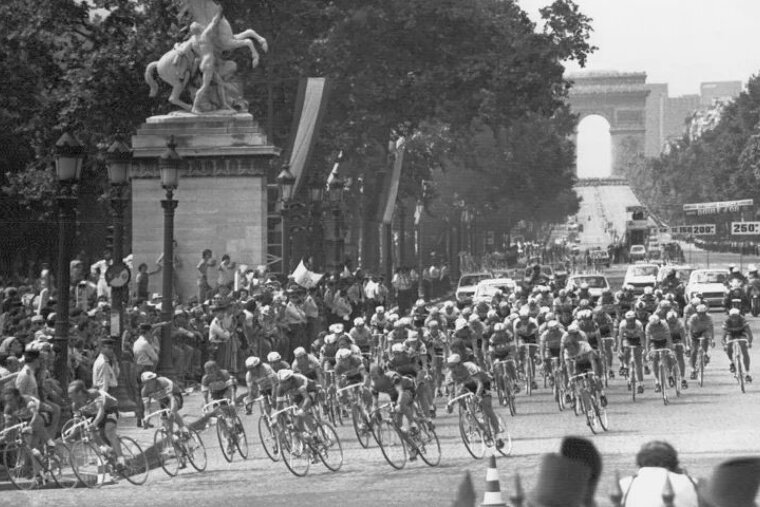
Le Tour de France is not just a race, it is a celebration of all things French; the rural villages, the stunning scenery, the cheering crowds, the sportsmanship and, finally, the grande finale in Paris.
Origins of Le Tour de France
The origins of the race date back to the early 1900s and two rival sports newspapers. Known as the 'Dreyfus Affair', it divided opinion in France at the end of the 19th century when French soldier, Albert Dreyfus, was found guilty of selling secrets to the Germans and was sentenced to life imprisonment. The outcome of the trial appeared to be heavily influenced by the fact that Dreyfus was Jewish, and many people, including the editor of Le Vélo, believed him to have been innocent. Le Vélo was France’s most dominant sporting newspaper of the time, but unfortunately the editor’s view was not shared by all. Dion Car Works, Le Vélo’s biggest advertiser, disagreed strongly with the newspaper and as a result withdrew their advertising and started their own publication, L’Auto. The idea of publicising this new venture with a cycle race was to be in direct competition with the Paris-Brest race organised by Le Vélo; the Paris-Brest race continues to this day and is still popular, but does not hold the iconic status of Le Tour de France.
The first Tour du France was in 1903, 60 people participated but only 21 completed the race. The winner was Maurice Garin who won 6,075 francs in prize money and averaged 25km/hr. He beat the second place winner, Lucien Pothier, by 2 hours 49 minutes, which is still the record for the greatest margin.
The mountains make their debut
The mountain stages of Le Tour de France were introduced to the itinerary in 1910, when the Pyrenees were added to the route. This upset many regular competitors because all of a sudden the ‘power cyclists’ found themselves at a disadvantage on the steep ascents. The ‘climbing cyclists’ had more of a fighting chance than before and, if anything, it made the race more exciting.
The first mountain stage went from Luchon to Bayonne; other climbs of the Pyrenees were Peyresourde, Aspin, Tourmalet and Aubisque. The same year, not coincidentally, saw the introduction of the broom wagon; a vehicle that follows the race ‘sweeping’ up riders who can’t continue!
The mountain stages are considered amongst the most exciting of the race, as the riders need strength, endurance and thighs of steel! The 21 bends of Alpe d’Huez are amongst the most legendary of the mountain stages. Anyone who has ever tried to complete them in their own time will know just what an incredible feat it is to whizz up them the way these guys do!
Post-war Tour
The race of 1919 was the first one after the First World War, and the toll the battlefields had taken on Europe’s male population was evident in the noticeable decrease in competitors. It was also the slowest race since 1906, due to bombed out roads and the loss of many of the great pre-war cycling champions.
Also in 1919 the yellow jersey was introduced to highlight the overall race leader.
Global TV viewing
1952 was the year that Le Tour went global. The race was filmed for television for the first time, opening up its popularity to a much wider fan base. It was also the first year that the legendary heights of Alpe d’Huez were climbed with a mountain top finish in Sestrières and on the Puy de Dôme.
1964 saw possibly the most gastronomically influenced battle for the yellow jersey ever. Multiple Tour winner and favourite contender, Jacques Anquetil, nearly blew his chances by over indulging at a BBQ on a rest day during the Pyrenees stages. The following day a terrible bout of indigestion took its toll and a bottle of champagne was promptly guzzled, curing his indigestion. He rode on to regain the yellow jersey!
The 61st Tour de France visited England for the first time in 1974. The riders passed through ten towns and completed a circuit stage in Plymouth. Alas the trophy was not won by a Brit this year, but by a Dutchman, Henk Poppe.
The jerseys
1975 was a year of firsts for the race: the first polka-dot jersey awarded to the best climber; first white jersey awarded to best young rider; first Tour finish on the Champs-Elysées.
The final stage is the most high-profile as the stage starts with a champagne toast and the winners are cheered over the finishing line by huge crowds, flashing cameras and jostling media. The race has finished at the Champs-Elysées every year since, and the spectacle of the competitors speeding past the Louvre and the Arc de Triomphe make for a great atmosphere.
The winner has normally already been decided on points by this stage, so the great dash for the finish is mostly just for the glory and prestige of being first over the historic line.
Unfortunately 1975 did not bring a first for Belgian cyclist Eddie Merckx. Intending to make this his sixth win until an enraged spectator leapt from the crowd and punched Merckx in the kidney, causing him to lose time and finish in second place.
An American cyclist, Greg LeMond, became the first to get a stage win in 1985 at the Lac de Vassivière. He unfortunately got shot during the winter though in a hunting accident and could not defend his title the following year. He made a strong return in 1989 and won first place.
1989 was also the year that Le Tour celebrated the French revolution’s bi-centenary by awarding a 17,890 francs bonus at kilometre 1789, in Martres-Tolosane (Luchon - Blagnac stage), where the Women’s Tour started.
Doping scandals
British cyclists historically hadn't made much of an impact on Le Tour de France, but in 1998 Britain's Chris Boardman won his third Prologue and captured the yellow jersey.
This year was also tarnished by scandal when, before the Tour had even started, a Festina team car was found to be loaded with performance enhancing drugs on the French/Belgian border. In the ensuing investigation team director Bruno Roussel confessed to systematic doping of the riders; the entire team was then expelled from the race.
When the race organisers insisted on conducting further drug inquiries, it prompted two sit-down strikes by the Tour riders and marred the 1998 race. The discovery of the drugs and Roussel's admission lead to an enquiry which saw police searches, arrests, court cases and a huge amount of negative publicity that has made doping a controversial part of Le Tour de France ever since.
Lance Armstrong
1999 was the first year that Lance Armstrong won first place, signalling the start of his domination for the next seven years. Claiming the winner’s podium an incredible seven consecutive times, Armstrong became a hero to race fans, when it was revealed that prior to his first victory he had beaten a severe form of testicular cancer that had spread to his brain and lungs. He had undergone brain and testicular surgery, as well as extensive chemotherapy as part of his recovery process.
Interestingly, a 2006 report by CS Atwood claims that Armstrong’s medical treatment may actually have contributed to his athletic ability. By altering his hormonal system and his body’s production of testosterone it could allegedly enhance his endurance performance. A
rmstrong’s physical attributes have been the subject of much discussion amongst sports journalists over the years. Apparently one of his distinguishing features is a heart that is 30% larger than average, which beats at 32-34bpm at rest and can reach up to 201bpm when strenuously exercising. He also has extremely low lactate levels, meaning that he is less prone to a build up of lactic acid (the stuff that makes your muscles burn and stiffen up when you exercise) in his legs.
His domination of the sport and astonishing performances year after year left him open to accusations of drug taking and Armstrong has described himself as ‘the most tested athlete in the world.’ In 2012, the US Anti-Doping Agency released a report on doping by the US Postal Service cycling team, implicating, amongst others, Armstrong, and describing a widespread use of drugs and several banned practices taking place over several Tours.
Following this report Armstrong was stripped of all titles since 1 August 1998, including all seven Tour victories, and no winner was declared in his stead.
More scandals threaten the Tour
The race of 1999 was one of thrills and spills for Italian cyclist Guiseppe Guerini, when during the arduous climb up Avoriaz he came face to face with one of his fans - quite literally. A young German photographer, known as Erik, was so keen to snap a good photo that he got a little too close to the action and collided head on with Guerini. Guerini scrambled back into the saddle and made up his lost time to win the stage. Guerini was apparently very gracious and bore the young German no hard feelings.
Doping scandals continued to overshadow the race in this period, and the 93rd Le Tour of 2006 was dominated by accusations of drug taking; American cyclist Floyd Landis brought disgrace to the yellow jersey when he was found guilty of drug use four days after being declared the winner. The race had already got off to an unsteady start when on the eve of the first stage 13 riders were banned from competing due to suspicion of doping. With some of the race favourites out of the picture, the field was now wide open for a lesser known contender to make his name. In the closest finish in the race’s history Floyd Landis, already a leading favourite, took first place. It was his unexpectedly good 17th stage in Morzine that aroused suspicion (especially after his inauspicious 16th stage). Landis vehemently denied the charges; however, the accusation was upheld and in 2007 Landis was stripped of his title. After a 14-month legal battle second place finisher Oscar Pereiro was announced the true winner.
With drugs testing now being a focal point of the race organisation, 2007 inevitably threw up more scandal and controversy when a number of cyclists tested positive for banned substances, causing the T-Mobile, Astana and Cofidis teams to be withdrawn from the race. The T-Mobile ban led to German TV broadcasters ZDF and ARD withdrawing their coverage of the race.
More bizarrely the 2007 Tour de France was also disrupted by a pair of kamikaze dogs… A wandering Labrador-Retriever was struck by a rider in the 9th stage, throwing the rider over the handlebars and buckling his front wheel. Fortunately the dog was unhurt and was quickly scooped out of the way by a spectator. Another overexcited hound threw a spanner in the works by dashing out in front of the pack during the 18th stage, causing a collision between two riders. There have been no allegations that the dogs were on drugs, but you never know...
Team Sky and the Brits make their mark
The generation of riders from the mid-2010s and beyond seem to be competing on a level playing field, without doping being used to realise their dreams. Team Sky would dominate the peloton for years in this era. The 2012 Tour was won by the first British rider ever, Bradley Wiggins, while finishing just behind him was Chris Froome, who along with Alberto Contador, became one of cycling's next big stars. Froome would win four Tours in total, three in a row - 2013, 2015, 2016, and 2017, followed by Geraint Thomas in 2018.
The Pogacar era
This winning streak was eventually broken by the UAE Team Emirates in 2020, with their Slovenian rider Tadej Pogacar taking the prize. By repeating his victory in 2021, it made him the youngest rider to achieve two Tour victories aged only 22.
In 2022, Denmark's 25 year old Jonas Vingegaard gained the yellow jersey as the overall winner, repeating his win in 2023. Pogacar came second both years, coming back to claim his third Tour title in 2024.
Facts & figures
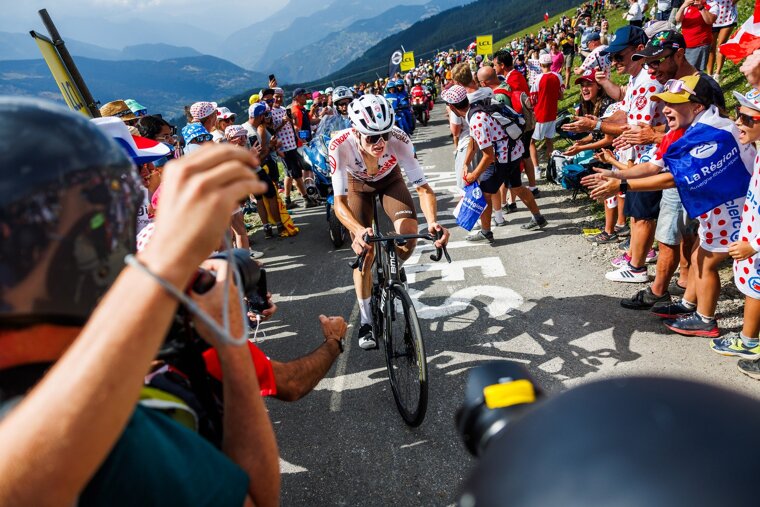
- over 500 towns and villages have hosted Le Tour de France
- more than 10,000 cyclists have entered the race
- over 6,000 cyclists have completed the race
- 250 different cyclists have worn the Yellow Jersey
- Raymond Poulidor has claimed the podium more times than anyone else (finishing eight times in the top three), despite never having worn the Yellow Jersey
- four riders have won five times: the French - Jacques Anquetil (1957 and 1961-1964) and Bernard Hinault (1978, 1979, 1981, 1982 and 1985), the Belgian Eddy Merckx (1969-1972 and 1984), and the Spanish Miguel Indurain (1991-1995)
- Lance Armstrong has won Le Tour de France more times than any other cyclist, claiming first place every year from 1999 to 2005. In 2012, he was stripped of all his achievements since 1998, including his seven Tour de France titles
Spotting the winners

Yellow jersey (Maillot jaune)
The famous yellow jersey has become symbolic of Le Tour de France and marks out the overall winner of the previous day’s stage. There are three coloured jerseys, each signifying the category that the wearer has won. Yellow is the overall winner, green is the sprint winner and the white jersey with red polka dots goes to the ‘King of the Mountains’ uphill winner.
There are also three lesser classifications: the white jersey for the best placed rider under the age of 25, the red jersey for the most competitive or aggressive rider (the ‘prix de combativité’), and the black on yellow jersey for the best team.
The yellow jersey was first officially introduced in 1919, to make the lead competitor stand out and give the other racers a clearly visible target to beat. The colour yellow was chosen partly for its high visibility and partly because it was the colour of the pages of L'Auto, the cycling journal that organised the race. There are records of the lead rider wearing a yellow jersey before this but it was not an official part of the race, to the extent that when Phillippe Thys lead the race in 1913 he had to pop into a shop 'en route' to buy his own jersey and then cut a bigger hole in the neck to get it over his head!
Prizes

Apart from the 'Maillot Jaune' there are other winners and jerseys awarded throughout the race. The day, or stage, winner will be awarded a prize and at the end of the three weeks there will also be a presentation for the overall winning team. The yellow jersey is sponsored by LCL.
Green jersey
The green jersey was created in 1953 for the 50th anniversary of the race. It brought a new interest to the race, the yellow jersey not being the only jersey at stake any longer. The first green jersey in history was held by Swiss Fritz Schaer. It is worn by the leader of the points classification. Points are awarded in the intermediate sprints and the stage finishes.
It was sponsored by PMU from 1992 until 2014, when Czech car manufacturer Skoda was revealed as the new sponsor.
Polka-dot jersey
The King of the Mountains classification was created in 1933 for the best climbers (first winner: Spain’s Vicente Trueba). But the polka-dot jersey only appeared in 1975. France’s Richard Virenque holds the record of most KOM jerseys: he won it seven times between 1994 and 2004.
The polka-dot jersey is sponsored by E. LeClerc.
White jersey
First appearing in 1968, it wasn't until 1975 it began to symbolise the future and youth of the peloton. The wearer is the best placed in the overall standings who is under the age of 26, first worn by the Italian Francesco Moser. The jersey has revealed some of the best talents in the sport – Denis Menchov in 2003, Alberto Contador in 2007, Andy Schleck from 2008 and 2010, Pierre Rolland in 2012, Egan Bernal in 2019 and Tadej Pogacar in 2020 - the latter two combining the yellow and white jerseys at the final.
It is currently sponsored by Krys.
